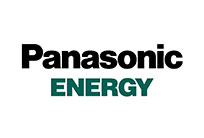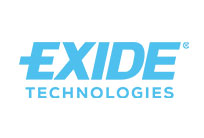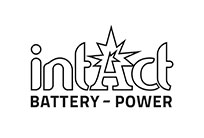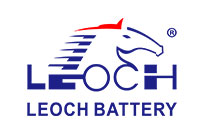Hawker Genesis 12EP42
Lead batteries are reliable and cost-effective. Maintenance free and with a low self-discharge, they can also last a long time if given regular care. Lead batteries are employed in alarms installations, UPS units, solar technology, mobile electronic devices and much more. Lead batteries come in three different categories: AGM batteries, gel batteries and pure lead batteries.
What is a lead accumulator and how does a lead accumulator work?
A lead accumulator (lead battery for short) is based on the functioning of a galvanic cell, which converts chemical energy into electrical energy. A lead-acid battery is an accumulator in which lead dioxide has been used for the electrodes (lead-acid battery). In the lead-acid battery design, the electrodes are surrounded by sulphuric acid, which acts as the electrolyte. In the lead-acid battery, the chemical reactions thus result from lead dioxide and sulphuric acid, which is why lead-acid batteries are often called lead-acid batteries. Since sulphuric acid can be very dangerous for humans and the environment, lead batteries are closed or completely sealed and proper disposal is mandatory.
Lead batteries have a high power density and can thus release a lot of energy in a short time. For this reason, they are often used as starter batteries for internal combustion engines, because lead batteries provide the starter motor with the necessary energy to start a vehicle. Furthermore, lead batteries are easily rechargeable and relatively inexpensive to purchase.
In addition, lead batteries also have good discharge characteristics in winter and cold weather. It is not possible to charge lead batteries at sub-zero temperatures.
Due to the high weight and size of lead-acid batteries, they are used, for example, in forklift trucks as a counterweight on the rear axle.
What are the different types of lead acid batteries?
Lead-acid batteries are divided into sealed lead-acid batteries and sealed lead-acid batteries. The latter are mostly valve-regulated lead-acid batteries (VRLA batteries), which can be transported and stored overhead because the internal pressure is regulated by an integrated pressure relief valve. Special care must be taken with closed lead accumulators as they contain liquid sulphuric acid and must be topped up with distilled water as required to continue to ensure optimum conductivity.
Sealed lead batteries are maintenance-free, i.e. batteries with bound electrolytes. Sealed lead batteries differ in their technology from lead-fleece batteries (AGM batteries) and lead-gel batteries. In these two types of lead batteries, the electrolytes are fixed in different ways.

In a lead-gel battery, silicic acid is added to the sulphuric acid, which solidifies the electrolyte into gel and makes gel batteries absolutely leak-proof. Lead-gel batteries are suitable, for example, for electric cars, wheelchairs or solar systems.
Fleece batteries are lead batteries with AGM technology (Absorbent Glass Mat). AGM means that the electrolyte is bound in a glass fibre fleece. This special technology makes it possible for lead batteries to deliver high currents and they are therefore often used as starter batteries or in uninterruptible power supplies (UPS).
Fleece batteries are lead batteries with AGM technology.
Where is a lead accumulator used?
For lead-acid batteries, a distinction can be made between a stationary application and a mobile application.
A stationary or also fixed application represents, for example, the use of a lead-acid battery as a buffer battery for an emergency power supply. This means that the batteries support the power supply or replace it for a certain period in the event of failure. The batteries are used, among other things, in central power supply systems to ensure emergency lighting or secure the uninterruptible power supply for alarm or fire alarm systems. Another stationary application of the lead battery is in photovoltaic systems (lead battery as solar storage).
In mobile applications, lead batteries are mainly used as traction batteries in electric vehicles or as starter batteries for vehicles with combustion engines. While traction batteries are responsible for driving vehicles, starter batteries primarily ensure that an internal combustion engine starts, but also take over the power supply if the alternator fails. In some applications, the lead batteries also function as a balancing mass, such as in forklift trucks. In this case, the lead-acid battery serves as a counterweight to the load being picked up and thus ensures stability against tipping over.
In summary, there is a wide range of applications for lead batteries. Whether as a starter battery for combustion engines or a traction battery for electric vehicles, such as forklift trucks, e-bikes, e-cars, e-scooters and many more. It is also exciting that lead batteries are used in submarines or electric torpedoes, among other things.
What is the service life of lead batteries?
The different types of lead batteries have different life expectancies. With proper storage, use as well as maintenance, this can be more than ten years.
The actual life expectancy of lead batteries varies.
The actual service life of lead batteries is also extremely influenced by the particular way in which they are used. Each cycle (this describes the process of charging and discharging the battery) consumes a part of the active material. The number of usable cycles varies for the different types of lead-acid batteries.
In general, however, it should be noted that the natural ageing of lead-acid batteries cannot be stopped and they should be regarded as consumable.

What do you have to consider when buying a lead-acid battery?
First of all, you should be clear about the intended use of the battery. Depending on the area of application, a different battery technology may be advisable. The connection options (plug, socket, terminal), the capacity (amperes) and the voltage, specified in volts, should also be taken into account from a technical point of view. Depending on preference and application, the following quality features should be considered:
- Fast-charging capability: describes how long the lead-acid battery needs to be fully charged/li>
- Charging- /cycle stability: Number of possible charges and discharges until the active mass within the battery has been used up to such an extent that the battery can only have a capacity of, for example, less than 50 % of its actual nominal capacity.
- Low self-discharge: The low self-discharge tells how much capacity the battery loses in percentage terms under optimal conditions.
- Lifetime: There are lead-acid batteries with a service life of 3-5 years or 6-9 years. High-quality versions are rated at 10-12 years (such as the batteries in our SSB SBL Serie ) or greater than 12 years.
If you are still unsure about your choice of battery, our sales team will of course be happy to help.
How is a lead-acid battery disposed of?
Lead batteries are found in many different applications, such as a car battery or starter battery, as a traction battery in electric wheelchairs, as a buffer battery in power supply systems or as a storage battery in solar panels. So it is not unlikely that a lead-acid battery will have to be disposed of in a normal household.
It is important to dispose of the lead-acid battery correctly. As mentioned in the text above, a lead-acid battery consists of lead dioxide and sulphuric acid. Both are toxic substances for humans and the environment if not disposed of properly. Considering this background, neither residual waste bins, recyclables bins or even bio and paper bins are an option. Lead batteries must be transported to a suitable disposal point or, if the quantities are large enough, can be collected using special transport or disposal palettes. After that, disposal takes place under dangerous goods regulations.
When disposed of correctly, for example through a lead-acid battery vendor, lead-acid batteries can be recycled comprehensively by crushing them and breaking them down into their component parts. Lead-acid batteries have high recyclability and are almost 100% recycled. During the recycling process, for example, the waste lead can be recovered and reintroduced into the production cycle for new lead batteries.
We would be happy to advise you personally on this topic. You will find our contact details on our contact page.
















